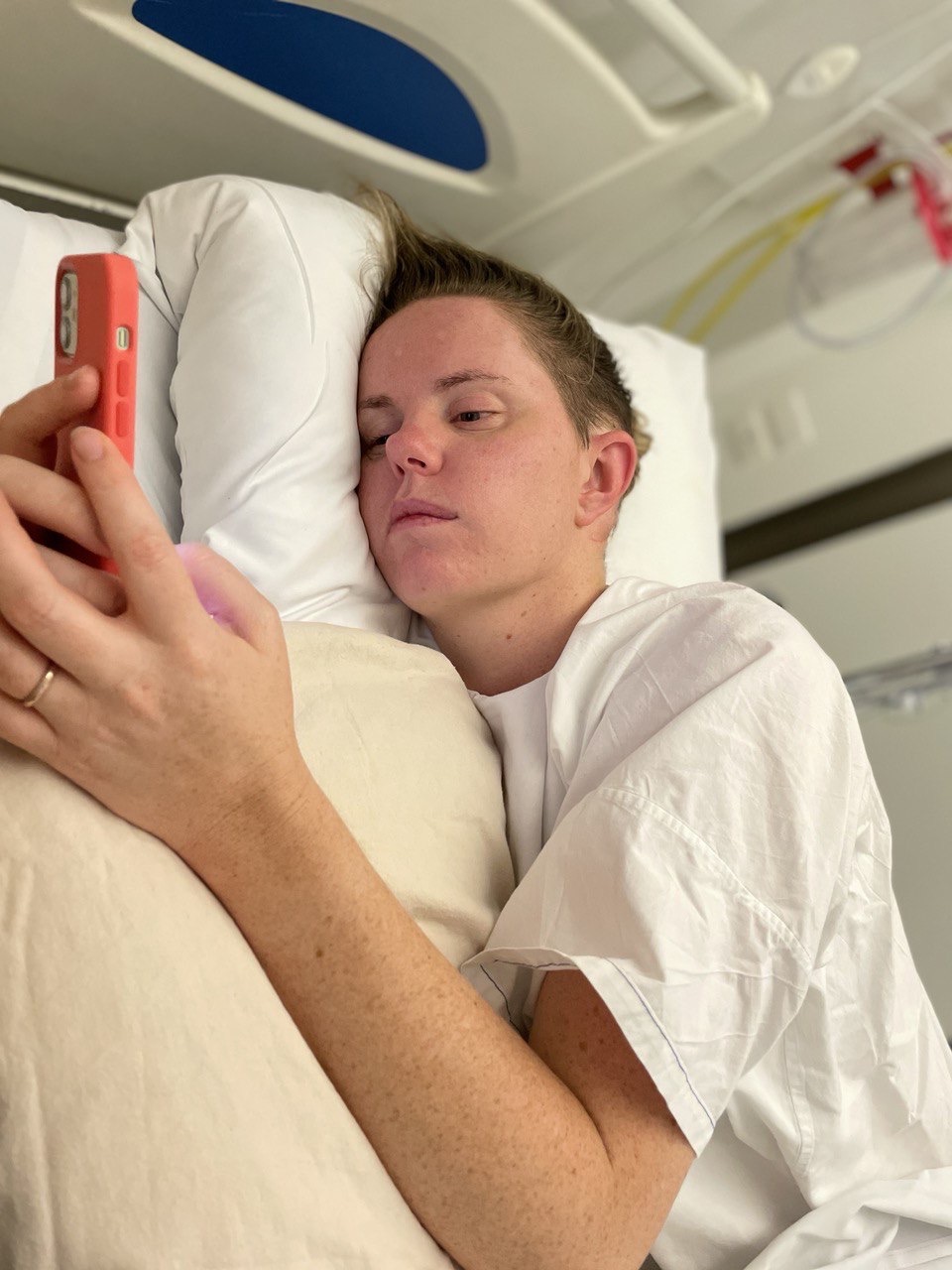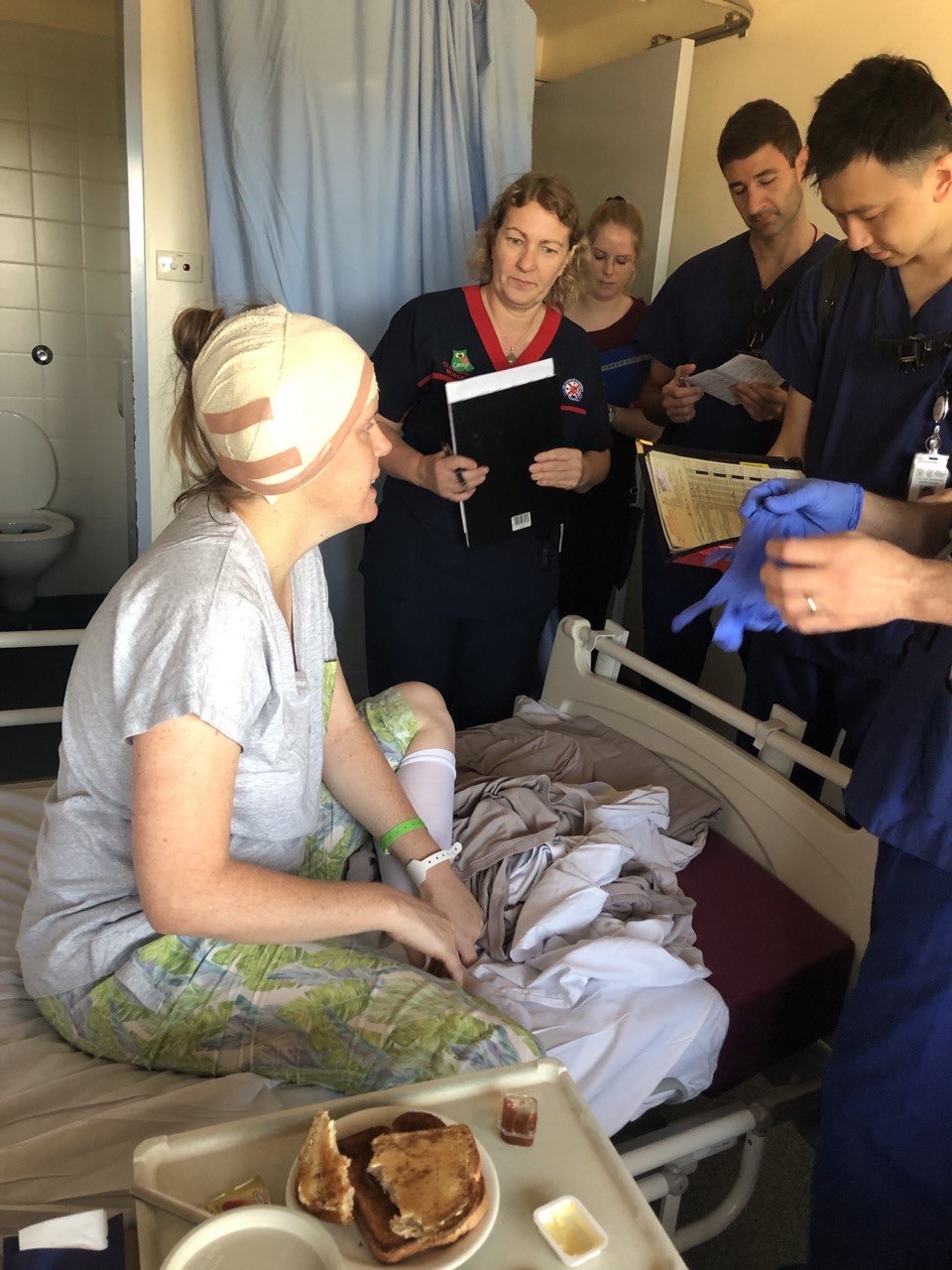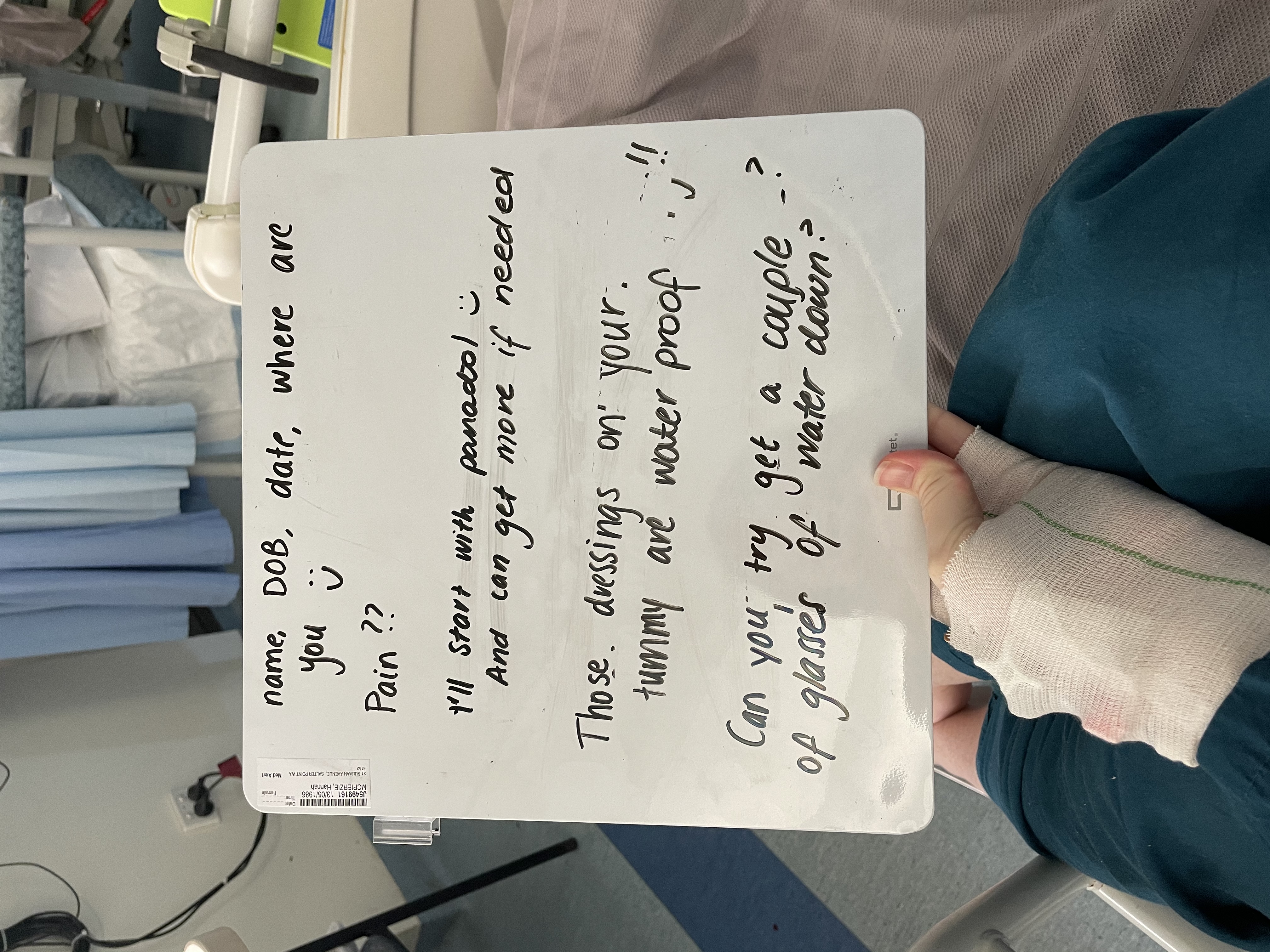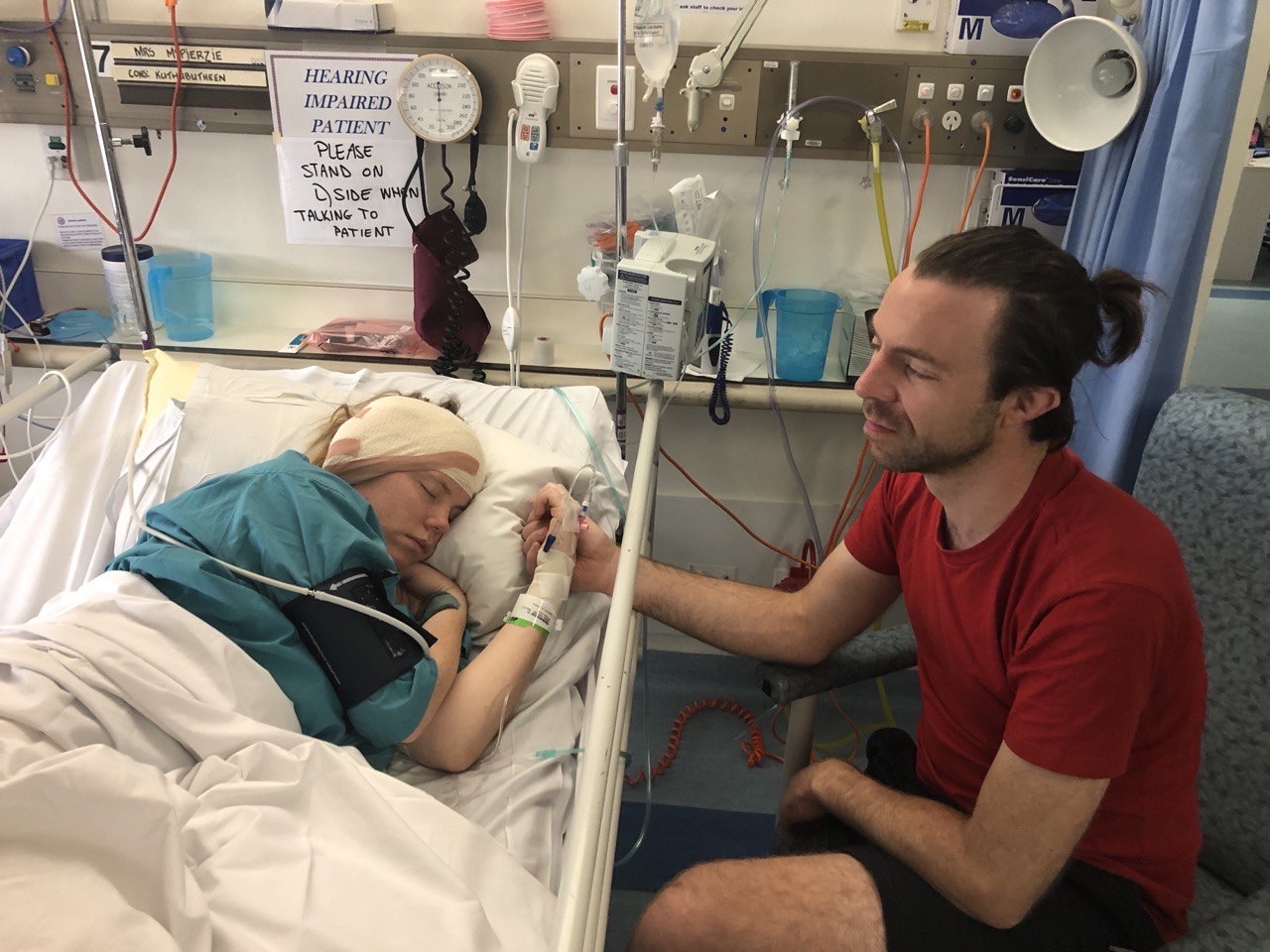My story with NF2
I find it interesting that NF Awareness month is May, since that was the month, I learned I had it. Until then, I had never heard of Neurofibromatosis Type 2 (NF2) and to this day, I have never met anyone else with the condition. I didn’t know I had NF2; no one in my family has it. It was picked up in 2015 from an MRI and I was diagnosed on my birthday.
 Looking back, there were some symptoms but nothing glaringly obvious.
Looking back, there were some symptoms but nothing glaringly obvious.
My hearing started to fluctuate in my late twenties – only slightly, and I would put it down to developing a cold or feeling rundown. I had always had great eyesight, but I began to squint, and things felt a little ‘off’.
A visit to the optometrist provided no answers as my eyes were in good condition – I later learned the issues were in my brain and not my eyes themselves. In the end, it was soreness in my jaw that led to an MRI which delivered my diagnosis.
I remember the moment perfectly.
It was a Wednesday afternoon in May, my 29th birthday.
I had been called in unexpectedly to receive the results of a scan performed three days earlier.
My doctor brought me into his room and told me, “An MRI is like a photograph, and like a photograph it picks things up in the background, and in the background, we can see you have brain tumours.”
Bang. That was it.
I quickly learned as much as I could about NF2;
all online and mainly American. I went along to an NF support group but everyone there had NF1 which I didn’t find very helpful, personally.
I learned about the Children’s Tumour Foundation (CTF) and found some useful literature to share with friends and family. To try to improve awareness and support in WA (where I live), my husband, brother and good friend decided to ride their bicycles from Melbourne to Sydney, via Canberra, to raise awareness and funds for CTF.
My sister and I drove one campervan, while our friends drove the other, supporting the boys as they tackled mountains and obstacles. It was a brilliant experience and we raised over $35,000 for the CTF!
Over the years I did two courses of targeted chemotherapy using Avastin to try to suppress tumour growth; once in 2016 and the other during the charity bike ride in 2018.
These were fortnightly treatments, over a three-month period and seemed to help pause, or at least slow, the development of my acoustic neuromas.
My husband and I decided to freeze embryos before commencing Avastin as there was concern as to how it could affect my fertility.
The genetic counsellor told us that there was a 50/50 chance of any future children inheriting NF2 which seemed hard to fathom.
Unfortunately, we didn’t have any luck with IVF and, after 4 years of going through that world, we decided to draw a line in the sand and move on.
 I began learning Auslan in 2017, following some stern advice from a neurosurgeon in Melbourne.
I began learning Auslan in 2017, following some stern advice from a neurosurgeon in Melbourne.
I started seeing an ophthalmologist about my vision and we discovered I had a tumour on my optical motor nerve, which was causing my double vision.
Special prisms in my lenses greatly reduced their effect and I was able to continue through life, relatively unchanged for a while.
That all changed with one appointment
A very common fear amongst people with NF2, deafness.
In late 2019 I was referred to ENT at Sir Charles Gairdner Hospital and met Dr Jafri Kuthubutheen who informed me that I needed surgery on my right-side acoustic neuroma.
Jafri sent me to Dr Arul Bala as the surgery is performed in collaboration between ENT and Neurosurgery.
It was a total whirlwind, but I was treated with compassion and respect the whole way through.
I understood the surgery would sever my hearing nerve and leave me deaf.
I also understood that a cochlear implant would not be possible as my cochlear nerve would be obsolete and lifeless after surgery.
I had no idea about Auditory Brainstem Implants (ABI) until I was diagnosed with NF2, and even then, doctors were reluctant to discuss them as my tumours weren’t large enough to worry about surgery at that stage.
Jafri was different and gave me lots of information about ABIs, answering my questions along the way. He told me that they would insert an ABI during the surgery to remove the tumour.
I learned that ABI placement was very delicate and that results varied, widely.
At best, I could hope to detect the presence or absence of sound, though probably not understand speech or music.
My first surgery was in February 2020
Just before COVID19 gripped the world. MED-EL (who made both my ABIs) flew a specialist over from Austria to provide assistance with the ABI placement. My surgery lasted 16 hours and I awoke deaf on my right-side. I had a cerebral spinal fluid leak after my operation which meant we had to wait 3 months before we could switch on. Unfortunately, I didn’t have any luck with my first ABI, and didn’t register any auditory responses.
 Things were calm for about 6 months as I navigated life with one working ear. I improved my Auslan skills and relied on a hearing aid on my left-side as that started to deteriorate.
Things were calm for about 6 months as I navigated life with one working ear. I improved my Auslan skills and relied on a hearing aid on my left-side as that started to deteriorate.
An MRI in January 2021 showed significant growth on my left acoustic neuroma. It had had a growth spurt and was wreaking havoc on my brainstem.
Again, Jafri referred me to see Dr Bala to discuss surgery. He was very clear in his assessment and the choice was laid out for me.
If we left the tumour, I would lose the ability to walk and gradually deteriorate further, losing more capacities as I went. If we removed the tumour, I would lose my remaining hearing and would be completely deaf.
That was a truly sobering moment.
I had the second brain surgery 6 weeks later, in March 2021. I spent the time in between trying to soak up as many sounds as I could, committing voices to memory as I prepared for a future spent in silence.
It was strange going into surgery knowing I was about to lose a sense and there was an energy in the theatre that reflected that heaviness.

The surgery lasted 18 hours and I awoke deaf, as expected. It had affected my facial nerve and I had lots of weakness on the left-side of my face.
I couldn’t shut my eye, cry or smile.
After my second surgery, my mental health took a massive hit.
I was grieving for the loss of my hearing, the loss of a future.
I also didn’t look like me because of the facial palsy.
There’s something truly frightening about looking in a mirror and not recognising the reflection.
Recovery was incredibly tough.
I couldn’t hear anything, I was in pain, I was weak, I was tired.
I felt totally isolated, like I was living inside a jar, impenetrable from the outside world.
I found getting psychological help difficult as I couldn’t hear the therapist, but I also wasn’t skilled enough in Auslan to use an interpreter.
I felt stuck between two worlds, not belonging to either one.
We had to wait over 4 months before we could switch the second ABI on.
I was very nervous as I hadn’t had any luck with the first one.
I remember lying on the bed in theatre, staring at my heartrate as Dr Dayse Tavora-Vieira switched on the electrodes one at a time.
That first ‘beep’ was magnificent; the most beautiful ‘beep’.
I recorded a response with each electrode.
Every single one!
I could understand speech straight away as long as I could see the person’s mouth as they formed the words.
Dayse and I had regular sessions to map the pitches of the electrodes and together we were able to put them in order, from low to high.
This took a few months but resulted in greater clarity and better speech recognition.
In between appointments, I used speech/sound rehab apps on my phone that played through my ABI via Bluetooth.
I then had to identify the sound or word I heard and keep practicing, using both male and female voices.

One year on from my second surgery and I am getting into the swing of my new life.
My facial palsy has improved due to fortnightly dry needling from my physio.
I am now technically deafblind as the surgery affected my eyesight and I require ongoing care to keep my left eye functioning.
I use an ID cane in overwhelming situations to give me a bit of stability and space amongst crowds.
I identify as deaf and I have become passionate about accessibility and improving spaces and experiences for the Deaf and Hard of Hearing community.
I am particularly interested in late-deafened adults and how to make the transition from the hearing world to the deaf world a little less scary for others.
I continue to improve my Auslan so I can get that sense of belonging to a community again.
What would I say to someone with NF2? You are not alone.
It’s a rare condition but you’re not alone.
Find a GP you feel really safe with and update them regularly.
They’re so important on this journey.
Get into the public health system and have regular clinics with ENT and audiology.
A great ENT team makes a huge difference.
Start learning Auslan and encourage your family and friends to do the same.
I have had the NF2 nightmare happen to me; both acoustic neuromas taken within 12 months.
Surround-sound to silence.
All the things I was frightened of happened, but I’m here and I’m still me and I’m thriving.
I will never not have NF2 but I don’t have to spend my life scared of what’s around the corner; that’s a choice and I choose not to live that way.
NF2 has helped me understand what’s important in the world. I can cherish the small moments but I don’t have to live a small life.
